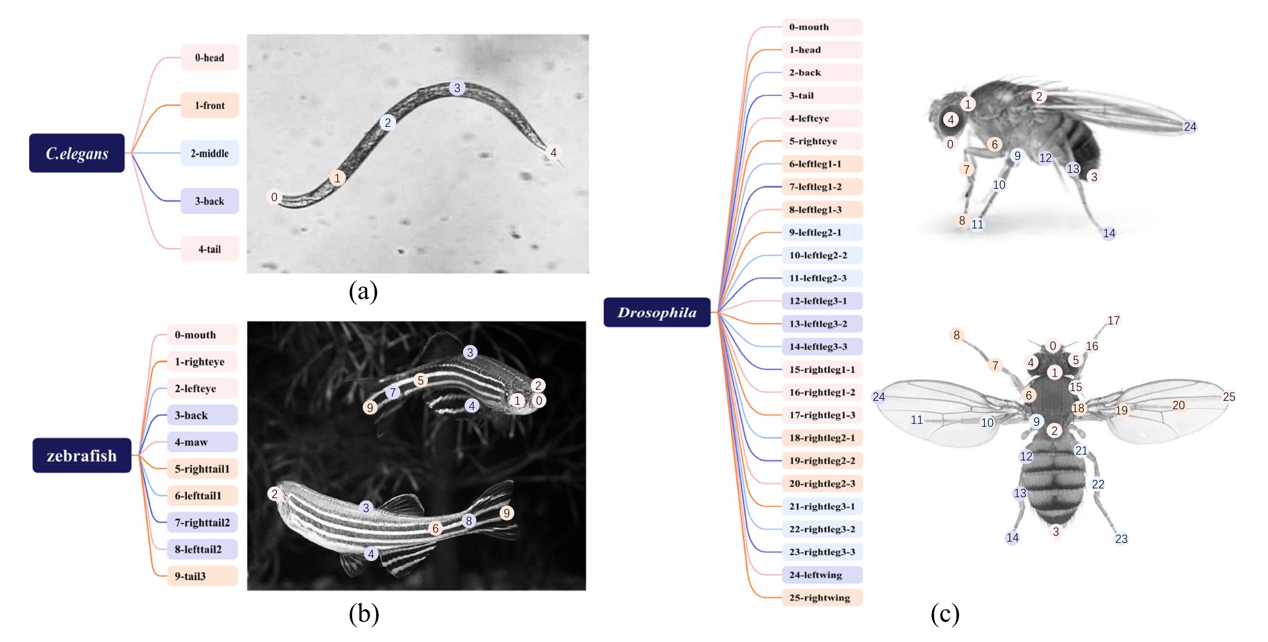A research team led by the Technology and Engineering Center for Space Utilization, Chinese Academy of Sciences (CSU), has officially released the SpaceAnimal Dataset, the world’s first benchmark dataset for multi-animal pose estimation and tracking in space. The study, titled “Pose estimation and tracking dataset for multi-animal behavior analysis on the China Space Station”, has been published in Scientific Data, a prestigious journal under the Natureportfolio.
Addressing the Data Gap in Space Biology
In the extreme environment of space—characterized by microgravity, high radiation, and weak magnetic fields—organism behavior and physiology differ significantly from those on Earth. Precise, contact-free behavioral monitoring is critical for understanding biological adaptation and ensuring astronaut health. However, AI applications in space life science have long been hindered by the lack of publicly available, high-quality annotated datasets.
The SpaceAnimal Dataset breaks this barrier. Built on image data collected aboard the "Wentian" lab module of the China Space Station, it provides an open-access, multi-species, multi-task dataset tailored for AI-driven behavioral analysis in orbit.
Key Features of the Dataset
· Three model organisms: C. elegans, Drosophila melanogaster, and zebrafish
· Three core tasks supported: detection, pose estimation, and identity tracking
· Species-specific keypoints: 5 for C. elegans, 10 for zebrafish, and 26 for Drosophila
· Expert-verified annotations: Including uncertainty metrics for robust benchmarking
· Open and reproducible: Complete evaluation scripts and baseline models provided, compatible with mainstream frameworks like Mmpose

Figure: Annotated pose examples in the SpaceAnimal Dataset across three species: (a) C. elegans, (b) Zebrafish, and (c) Drosophila.
The dataset is now publicly accessible via Zenodo (DOI: 10.5281/zenodo.12904072) to support the global research community.
Benchmarking AI Performance
Using the dataset, the research team evaluated state-of-the-art deep learning models:
· ViTPose delivered the best results across all species for pose estimation.
· OC-SORT excelled in tracking C. elegans and Drosophila, while ByteTrack performed best with zebrafish.
The findings highlight performance bottlenecks in complex conditions such as occlusion and motion blur, offering valuable direction for developing next-generation space-capable algorithms.
Future Outlook
As the first of its kind, SpaceAnimal paves the way for AI-powered behavior analysis in space biology, with implications for long-duration missions, biomedical monitoring, and fundamental life science research in orbit. Future versions are expected to expand to more species, behaviors, and multimodal data, enabling collaborative analysis and deeper understanding of life beyond Earth.
About the Project
This project was led by the Technology and Engineering Center for Space Utilization (CSU), Chinese Academy of Sciences, in collaboration with the Institute of Biophysics, Institute of Hydrobiology, and Dalian Maritime University.
Citation
lLi S, Liu K, Wang H, et al. Pose estimation and tracking dataset for multi-animal behavior analysis on the China Space Station[J]. Scientific Data, 2025, 12(1): 766. https://doi.org/10.1038/s41597-025-05111-8. https://doi.org/10.1038/s41597-025-05111-8
lLi, S., Liu, K., Wang, H., Yang, R., Li, X., Sun, Y., Zhong, R., Wang, W., Li, Y., Sun, Y., & Wang, G. (2025). SpaceAnimal: Pose estimation and tracking dataset for multi-animal behavior analysis on the China Space Station [Data set]. Zenodo. https://doi.org/10.5281/zenodo.15272849
Resources
lDataset: https://doi.org/10.5281/zenodo.15272849
lCode Repository: https://github.com/CSU-SPACE/SpaceAnimal
File Download: